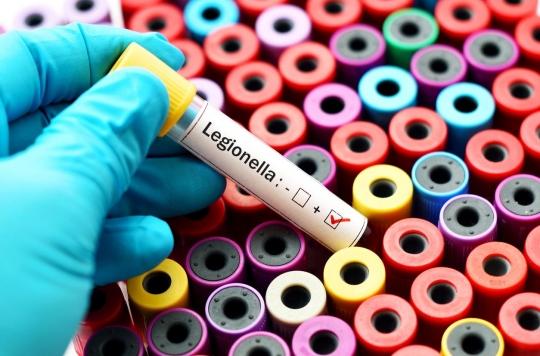While the legionellosis trial opened in Bethune, this respiratory infection continues to claim victims in France. Even if, since the 2000s, preventive measures have been adopted.
86 victims, including 18 dead. Here is the balance sheet of the epidemic of legionellosis which had affected Pas-de-Calais from November 2003 to January 2004. It was yesterday, before the Criminal Court of Béthune, that the trial for the victims began. At the helm of the defendants, the Noroxo petrochemical plant in Harnes (62), the only source of contamination identified. Its owner, the American group ExxonMobil, has since dismantled it. The facts that they are accused of: homicides and involuntary injuries due to non-compliance with a safety obligation.
It is the poor cleaning of the contaminated towers that is the cause. A prefectural decree of December 2001 required the operator to close the cooling system when there is a concentration of Legionella bacteria greater than 100,000 colony-forming units per liter (CFU / I). At the time, the Noroxo petrochemical plant challenged the legality of this text.
More than 1000 cases of legionellosis per year in France
Legionella is a respiratory infection caused by bacteria called Legionella (Legionella). They are the cause of two types of human illnesses: Pontiac fever and Legionnaires’ disease. The last, more commonly called legionellosis, is characterized by acute pulmonary manifestations such as pneumopathies. In the majority of cases, the outcome is favorable with antibiotics.
According to’Health watch institute (InVS), the toll of legionellosis cases in France has been declining since 2005. A reassuring result despite a one-off increase in the number of cases in 2010. In 2011, 1170 cases were declared in France, among them, 114 are. dead.
As was the case in the Lensois mining area, contamination occurs through inhalation of contaminated water in the form of fine droplets or aerosols. It can also take place during showers.
Depending on climatic conditions, these micro-droplets can travel nearly 2 kilometers and survive for 2 hours in air. Air-cooling towers placed on the roofs of buildings are therefore major vectors of contamination if they are poorly maintained. In Lens, the identified victims did not all live near the factory, some even lived 4 kilometers from the site.
If the infection strikes at random, there are certain contributing factors. Adults are the main targets, especially the elderly, and the sick. Tobacco is also involved. Many of those affected are smokers.
To try to guard against everyday actions exist. Christine Campese, epidemiologist at the Institute for Public Health Surveillance, suggests maintaining your water network by cleaning the showers to prevent the build-up of scale or regularly purging the water circuit so that there is no stagnation, place where legionellosis develops.
Listen to Christine Campèse: epidemiologist at the Institute for Public Health Surveillance in charge of the legionella file: “ Regularly purge the water circuits. “
A taboo subject for public authorities
For associations, prevention is non-existent. Dr Marie-Josée Payot, general practitioner and in charge of the association of victims of legionellosis, denounces the silence of the public authorities. According to this former victim of legionellosis, it is a taboo subject that no longer exists. ‘has not been the subject of any major public awareness campaign: “We do not do any prevention concerning legionellosis, she denounces, the public authorities act as if it were a rare disease or even disappeared . “
InVS experts are more nuanced. Several circulars and orders on air-cooling towers have been issued in recent years.
Listen to Christine Campèse: “ There have been several circulars to improve prevention. ”
.















